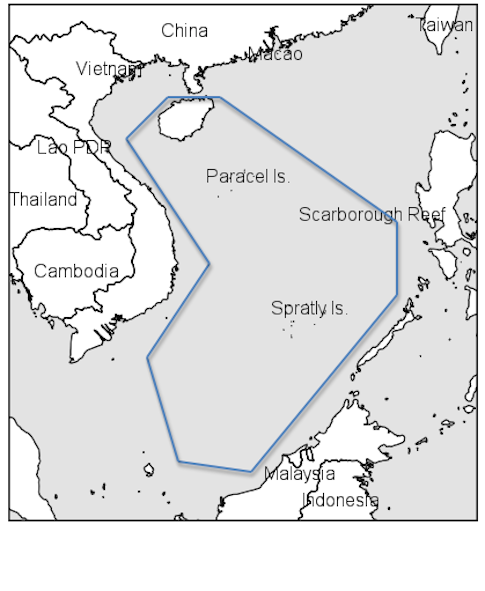James R. Holmes on the change in China’s approach to the disputed South China Sea region:
Associated Press reporter Christopher Bodeen chooses his words well in a story on China’s latest bid to rule offshore waters. Beijing, he writes, is augmenting its “police powers” in the South China Sea. That’s legalese for enforcing domestic law within certain lines inscribed on the map, or in this case nautical chart.
The Hainan provincial legislature, that is, issued a directive last November requiring foreign fishermen to obtain permission before plying their trade within some two-thirds of the sea. Bill Gertz of the Washington Free Beacon supplies a map depicting the affected zone. It’s worth pointing out that the zone doesn’t span the entire waterspace within the nine-dashed line, where Beijing asserts “indisputable sovereignty.”
China imposes fishing curbs: New regulations imposed Jan. 1 limit all foreign vessels from fishing in a zone covering two-thirds of the South China Sea. Washington Free Beacon
A few quick thoughts as this story develops. One, regional and extraregional observers shouldn’t be too shocked at this turn of events. China’s claims to the South China Sea reach back decades. The map bearing the nine-dashed line, for instance, predates the founding of the People’s Republic of China. It may go back a century. Nor are these idle fancies. Chinese forces pummeled a South Vietnamese flotilla in the Paracels in 1974. Sporadic encounters with neighboring maritime forces — sometime violent, more often not — have continued to this day. (See Shoal, Scarborough.) Only the pace has quickened.
Henry Kissinger notes that custodians and beneficiaries of the status quo find it hard to believe that revolutionaries really want what they say they want. Memo to Manila, Hanoi & Co.: Beijing really wants what it says it wants.




